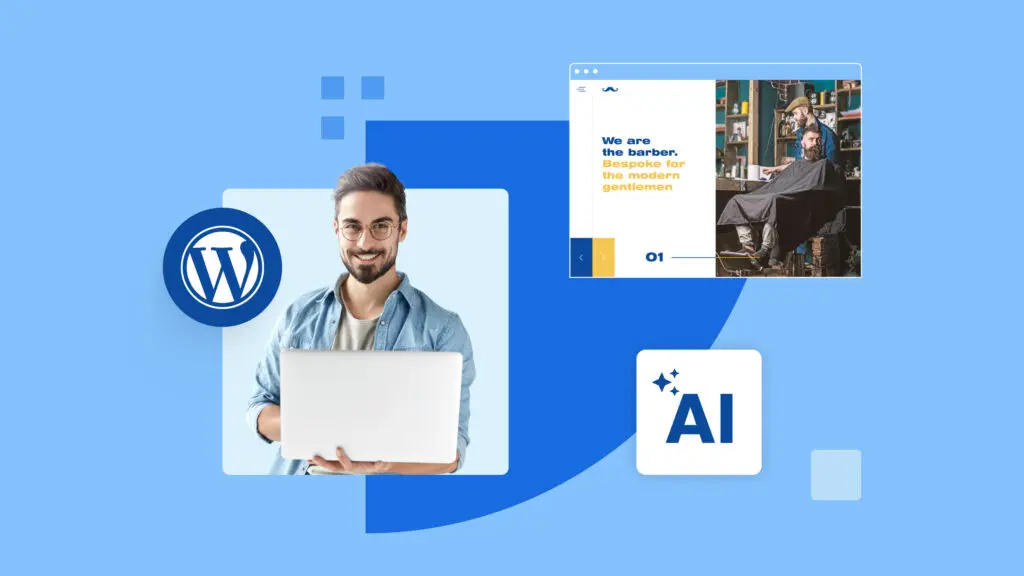How to Create WordPress Website With AI
How to Make a WordPress Website With AI
In the digital age, having a website is crucial for businesses, bloggers, and creatives alike. WordPress, a popular content management system, has made website creation accessible to many. Now, with the integration of artificial intelligence (AI), building a website is even more efficient and user-friendly. This guide will walk you through the steps to create a WordPress website using AI tools.
Step 1: Planning Your Website
Before diving into the technical aspects, it’s essential to plan your website. AI tools like ChatGPT can help you brainstorm and outline your website’s structure. Here are some key points to consider:
• Purpose: Define the primary goal of your website. Is it a blog, an e-commerce site, a portfolio, or something else?
• Audience: Identify your target audience. Understanding their needs will help you tailor your content and design.
• Content: Plan the type of content you’ll publish. This includes blog posts, product descriptions, images, and videos.
• Design: Think about the look and feel of your website. What colors, fonts, and layouts will you use?
Step 2: Setting Up Your WordPress Website
1. Choose a Domain and Hosting: Select a domain name that reflects your brand and is easy to remember. For hosting, consider providers like Bluehost or SiteGround, which offer seamless WordPress integration.
2. Install WordPress: Most hosting providers offer one-click WordPress installation. Follow their instructions to set up your site.
3. Select a Theme: WordPress offers a variety of free and premium themes. Choose one that aligns with your website’s purpose and design preferences.
Step 3: Integrating AI Tools
1. AI-Powered Page Builders: Tools like Elementor and Divi have integrated AI features that suggest layouts and design elements based on your inputs. These tools make it easy to create professional-looking pages without any coding knowledge.
2. Content Generation: AI tools like Jasper (formerly Jarvis) can help you generate high-quality content. Whether you need blog posts, product descriptions, or social media updates, these tools can save you time and effort.
3. SEO Optimization: Use AI-powered SEO tools like Yoast SEO or RankMath. These plugins analyze your content and provide suggestions to improve your search engine rankings.
Step 4: Customizing Your Website
Add Essential Plugins: Plugins extend the functionality of your WordPress site. Some must-have plugins include:
• Yoast SEO: For optimizing your content for search engines.
• Akismet: For spam protection.
• WooCommerce: If you’re setting up an online store.
• Jetpack: For security, performance, and site management.
1. Customize Your Theme: Use the theme customizer to adjust colors, fonts, and layouts. AI tools within page builders can suggest design improvements based on best practices.
2. Create Key Pages: Ensure you have the essential pages set up, such as Home, About, Contact, and Blog. Use AI tools to generate content and design elements for these pages.
Step 5: Enhancing User Experience
1. Responsive Design: Ensure your website looks great on all devices. Most modern themes are responsive, but it’s always good to test your site on different screen sizes.
2. Speed Optimization: Use caching plugins like WP Super Cache or W3 Total Cache to improve your site’s loading speed. AI tools can also help optimize images and other media files.
3. Accessibility: Make your website accessible to all users, including those with disabilities. Use plugins like WP Accessibility to ensure compliance with accessibility standards.
Step 6: Launching Your Website
1. Test Everything: Before going live, thoroughly test your website. Check for broken links, ensure all forms work, and verify that your site looks good on all devices.
2. Backup Your Site: Use plugins like UpdraftPlus to create regular backups of your website. This ensures you can restore your site if anything goes wrong.
3. Go Live: Once you’re confident everything is in place, it’s time to launch your website. Announce your launch on social media and other channels to attract visitors.
Step 7: Maintaining Your Website
1. Regular Updates: Keep your WordPress core, themes, and plugins updated to ensure security and performance.
2. Monitor Performance: Use tools like Google Analytics to track your website’s performance. AI tools can help analyze this data and provide insights for improvement.
3. Engage with Your Audience: Use AI-powered chatbots to interact with visitors and provide instant support. Tools like Drift or Tidio can enhance user engagement and satisfaction.
Building a WordPress website with AI is a game-changer. It simplifies the process, making it accessible to everyone, regardless of technical expertise. By leveraging AI tools, you can create a professional, high-performing website that meets your goals and engages your audience. Start planning, set up your site, integrate AI tools, and watch your website come to life with ease.

